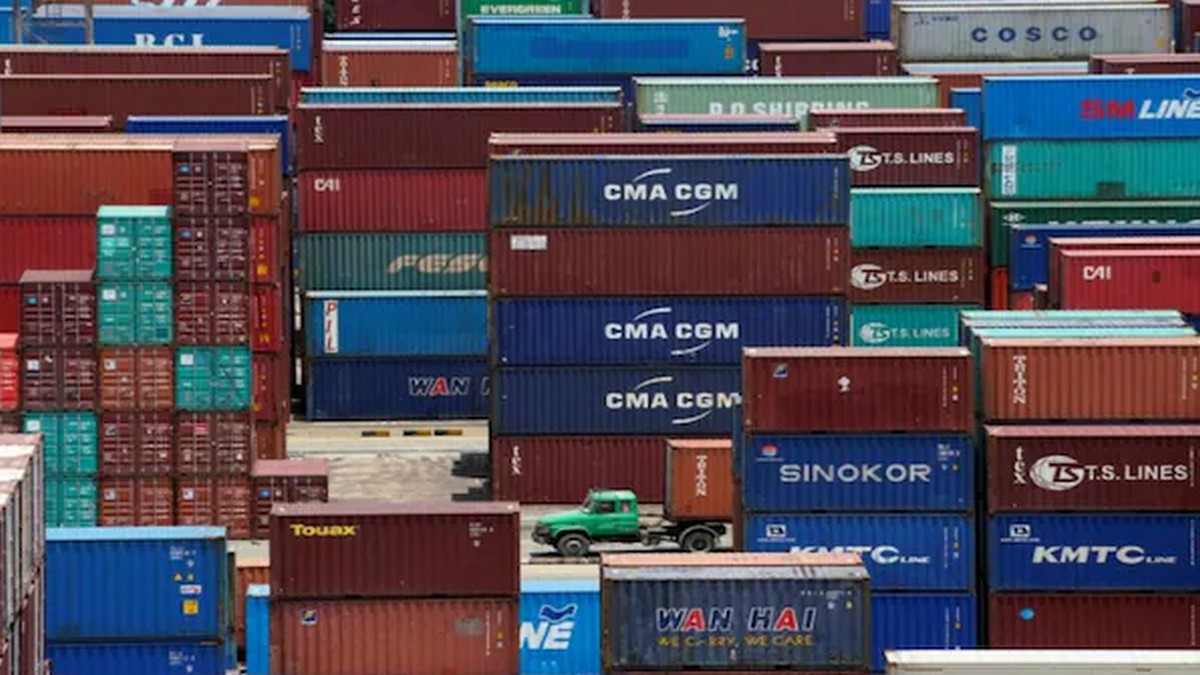Editor’s Note: The tenth edition of Raisina Dialogue, India’s flagship conference on geopolitics and geo-economics, is now underway in Delhi. Firstpost, which has partnered with the Observer Research Foundation (ORF), brings you this piece ahead of the session on the International North-South Transport Corridor slated for day 2 of the conference. As part of the Firstpost’s Ideas Pod, Davit Karapetyan, secretary general, Ministry of Foreign Affairs, Armenia and Saeed Khatibzade, president, Institute for Political and International Studies, Iran, talk about the INSTC and its importance. The discussion is moderated by ORF vice president Harsh V Pant
speaking at Firstpost’s IdeasPod as part of the annual Raisina Dialogue organised by Observer Research Foundation (ORF) in partnership with the Ministry of External Affairs (MEA)
The International North-South Transport Corridor (INSTC) is back in the news.
The 7,200 kilometre transit route links the Indian Ocean and Persian Gulf to the Caspian Sea via Iran and then to northern Europe via Russia’s St Petersburg.
But what do we know about the INSTC? And what about India’s role in it?
What do we know?
The INSTC was founded on September 12, 2000, in St Petersburg by Iran, Russia and India.
The countries signed the agreement at the Euro-Asian Conference on Transport.
Linking ship, rail, and road routes, the project is aimed at enhancing trade and connectivity among its members.
The INSTC currently has 13 members – India, Iran, Russia, Azerbaijan, Armenia, Kazakhstan, Kyrgyzstan, Tajikistan, Turkey, Ukraine, Belarus, Oman and Syria.
Bulgaria has joined the group as an observer.
As per Drishti IAS, it has three main routes – the Central, Western and Eastern Corridor.
The Central Corridor starts from Mumbai’s Jawaharlal Nehru Port and goes to Iran’s Bandar Abbas port on the Strait of Hormuz.
It goes through Nowshahr, Amirabad, and Bandar-e-Anzali along the Caspian Sea to touch Russia’s Olya and Astrakhan ports.
The Western Corridor links Azerbaijan’s railway network to Iran)and the Jawaharlal Nehru port via sea route.
Its Eastern Corridor links Russia to India via Kazakhstan, Uzbekistan, and Turkmenistan.
As per The Print, the INSTC was meant to be an alternative to the Suez Canal route.
As per Geopolitical Monitor, the INSTC can cut transit times by 40 per cent and freight costs by 30 per cent.
What about India’s role in INSTC?
As per The Print, the project was brought back into the spotlight after two dry runs were conducted on the INSTC in 2014 and 2017.
India’s Ministry of Commerce and Industry did the 2014 dry run from Mumbai to Iran’s Bandar Abbas by sea, from Tehran to Bandar Anzali by rail and then to Russia’s Astrakhan by sea.
Shankar Shinde, former chairman of Freight Forwarders Associations in India (FFFAI), who spearheaded India’s efforts, confirmed that the INSTC was better than the Suez Route when it came to cost and time taken to send goods.
“When Iran came under US sanctions in 2019, Indian companies became cautious [of INSTC]. But sanctions against Russia led to a boost in India’s trade with Moscow which brought some positivity back into the conversation about INSTC and revived it in a way,” Gulshan Sachdeva, professor of European Studies at Jawaharlal Nehru University, told the outlet.
Then, in 2023, India, Armenia and Iran in April 2023 decided to jointly give the INSTC a new push.
As per ORF, India is eyeing using the project as a counterweight to China’s Belt and Road Initiative (BRI) projects in Central Asia.
India has invested heavily in Iran’s Chabahar Port – a crucial link in the INSTC.
In May 2024, India signed a 10-year deal with Iran to operate port for a decade.
The agreement was signed between Indian Ports Global Limited (IPGL) and the Port and Maritime Organisation of Iran.
IPGL will invest about $120 million while another $250 million will be raised as debt.
Located in Sistan-Balochistan province on the energy-rich Iran’s southern coast, the strategically located Chabahar Port on the Gulf of Oman – which New Delhi had proposed to develop way back in 2003 – will help India expand trade with Central Asia.
During a visit to Yerevan in Armenia in October 2021, External Affairs Minister S Jaishankar proposed that the strategic Chabahar Port in Iran be included in the North-South Transport Corridor that has the potential to bridge connectivity barriers.
The Chabahar port is being considered a gateway to golden opportunities for trade by India, Iran and Afghanistan with Central Asian countries, besides ramping up trade among the three countries in the wake of Pakistan denying transit access to New Delhi.
As per Drishti IAS, the port allows India to reach Central Asia without Pakistan and Afghanistan.
The agreement replaced an initial 2016 pact, which covered India’s operations at the Shahid Beheshti terminal in Chabahar port and was being renewed on an annual basis.
Experts say the INSTC could be a geopolitical game-changer.
“For India, the INSTC represents a homegrown alternative to China’s Belt and Road, a new avenue into European markets, a fount of cheap coal and oil from Russia, and an insurance policy should there ever be a falling out with the West,” a piece in Geopolitical Monitor stated.
India in 2024 used the Chabahar Port to send 20,000 tonnes of wheat aid to Afghanistan.
In 2021, India sent supply environmentally friendly pesticides to Iran via the port.
Kandla port in Gujarat is the closest to the Chabahar port at 550 Nautical Miles, while the distance between Chabahar and Mumbai is 786 Nautical Miles.
As per Economic Times, India and Armenia in March discussed how to increase connectivity via Iran and the Chabahar Port.
The Hindu quoted Shipping and Waterways Sarbananda Sonowal as saying that India by 2047 is looking at a port handling capacity of 10,000 million metric tonne per annum through projects like the INSTC.
With inputs from agencies


)

)
)
)
)
)
)
)
)



